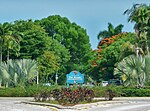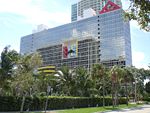Mercy Hospital (Miami)
1950 establishments in FloridaCatholic health careCatholic hospitals in North AmericaCoconut Grove (Miami)Florida building and structure stubs ... and 6 more
Hospital buildings completed in 1950Hospitals established in 1950Hospitals in FloridaHospitals in MiamiMiami building and structure stubsSouthern United States hospital stubs

Mercy Hospital is a 488-bed acute care hospital located in Coconut Grove, Miami, Florida. It is Miami-Dade County's only Catholic hospital. Mercy Hospital was established in 1950. It was a member of the Catholic Health East until it was sold to HCA. It is sponsored by the Sisters of St. Joseph of St. Augustine, Florida. The hospital has 2,300 full-time employees.
Excerpt from the Wikipedia article Mercy Hospital (Miami) (License: CC BY-SA 3.0, Authors, Images).Mercy Hospital (Miami)
South Miami Avenue, Miami
Geographical coordinates (GPS) Address Phone number Website External links Nearby Places Show on map
Geographical coordinates (GPS)
| Latitude | Longitude |
|---|---|
| N 25.740141666667 ° | E -80.213886111111 ° |
Address
Mercy Hospital
South Miami Avenue 3663
33133 Miami
Florida, United States
Open on Google Maps








